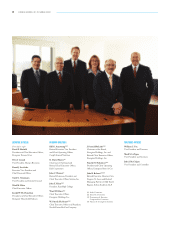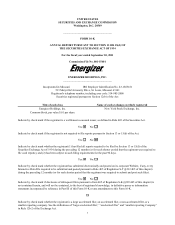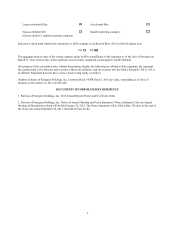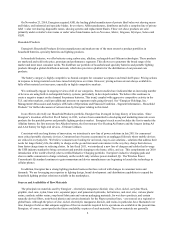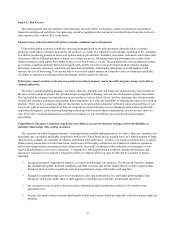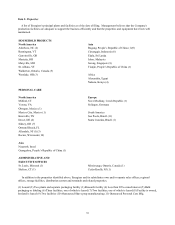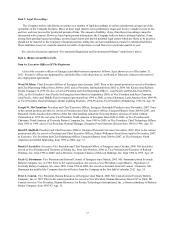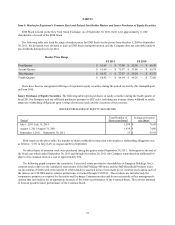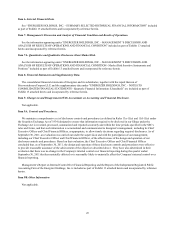Energizer 2011 Annual Report Download - page 20
Download and view the complete annual report
Please find page 20 of the 2011 Energizer annual report below. You can navigate through the pages in the report by either clicking on the pages listed below, or by using the keyword search tool below to find specific information within the annual report.Item 1A. Risk Factors.
The following risks and uncertainties could materially adversely affect our business, results of operations, consolidated
financial condition and cash flows. Energizer may amend or supplement the risk factors described below from time to time by
other reports it files with the SEC in the future.
Energizer faces risks associated with global economic conditions and credit markets.
Unfavorable global economic conditions, increased unemployment levels and uncertainty about the future economic
prospects could reduce consumer demand for our products as a result of a reduction in discretionary spending of the consumers
or a shift of purchasing patterns to lower-cost options such as private label. Similarly, our retailer customers could reduce their
inventories, shift to different products or require us to lower our prices. Declining financial performance by certain of our
retailer customers could impact their ability to pay us on a timely basis, or at all. These general risks were heightened recently
as economic conditions globally deteriorated significantly and the recovery in most developed markets remains sluggish.
Worsening economic conditions could harm our sales and profitability. Additionally, disruptions in credit markets could
increase our cost of borrowing. If we are not able to access debt capital markets at competitive rates or terms and conditions,
our ability to implement our business plan and strategy will be negatively affected.
If Energizer cannot continue to develop new products in a timely manner, and at favorable margins, it may not be able to
compete effectively.
The battery, portable lighting products, wet shave, skin care, feminine care and infant care industries have been notable for
the pace of innovations in product life, product design and applied technology, and our success depends on future innovations.
The successful development and introduction of new products, such as Schick Hydro, and line extensions face the uncertainty
of retail and consumer acceptance and reaction from competitors, as well as the possibility of reducing the sales of our existing
products. There can be no assurance that our investments in research and development will lead to innovation and that we can
recover the costs of such investments, or that our competitors will not introduce new or enhanced products that significantly
outperform Energizer's, or develop manufacturing technology which permits them to manufacture at a lower cost relative to
ours. If we fail to develop and launch successful new products, we may be unable to grow our business and compete
successfully.
Competition in Energizer's industries may hinder our ability to execute our business strategy, achieve profitability, or
maintain relationships with existing customers.
The categories in which Energizer operates, including battery, portable lighting products, wet shave, skin care, feminine care
and infant care, are mature and highly competitive, both in the United States and on a global basis, as a limited number of large
manufacturers compete for consumer acceptance and limited retail shelf space. At times, our retailer customers have sought to
obtain pricing concessions or better trade terms, and because of the highly competitive environment in which we operate as
well as increasing retailer concentration, their efforts can be successful, resulting in either reduction of our margins, or our
relative disadvantage to lower cost competitors. Competition is based upon brand perceptions, product performance and
innovation, customer service and price. Energizer's ability to compete effectively may be affected by a number of factors,
including:
• Energizer's primary competitor in batteries, wet shave and feminine care products, The Procter & Gamble Company,
has substantially greater financial, marketing and other resources and greater market share in certain segments than
Energizer does, as well as significant scale and negotiating leverage with retailers and suppliers;
• Energizer's competitors may have lower production, sales and distribution costs, and higher profit margins, than
Energizer, which may enable them to offer aggressive retail discounts and other promotional incentives;
• our competitors may be able to obtain exclusive distribution rights at particular retailers, or favorable in-store
placement; and
• we may lose market share to private label brands sold by retail chains, which are typically sold at lower prices than our
products.
10


